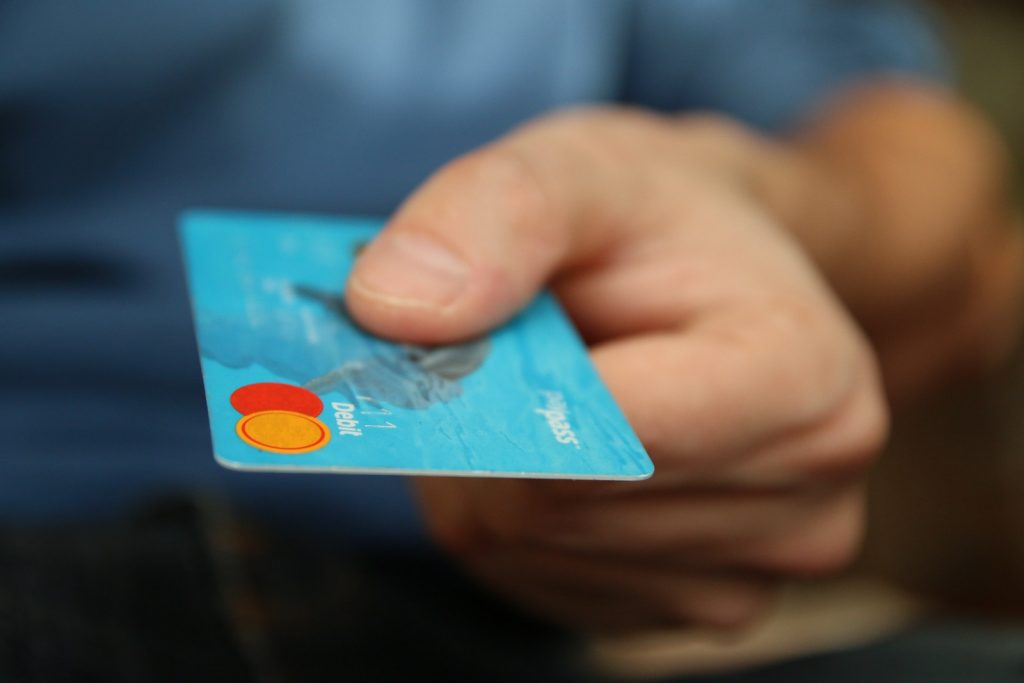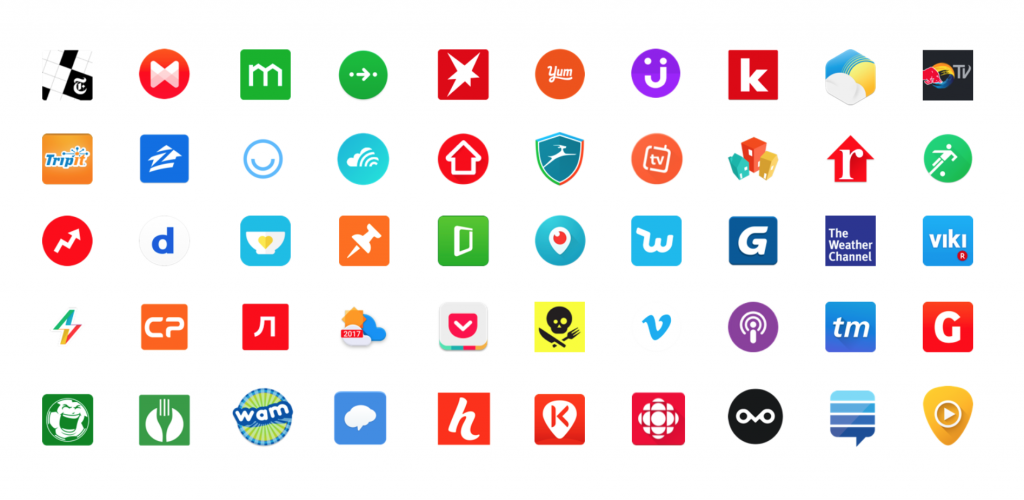
Photo credit: jarmoluk on Pixabay
When Walmart offers home delivery, when Amazon buys a grocery store, and when trendy mobile commerce startups open chic bodegas in NYC and San Francisco, you know something is changing about retail, commerce, and customer behavior.
And we’ve been unpacking those changes for about a month now.
Finally, here’s the payoff: five critical components for retail and brand success.
This is part five of a five-part series on omnichannel customer engagement highlighted in our new e-book, “Taps, Clicks, Bricks: Omnichannel Customer Engagement Is the New Brand Superpower.” Download the full e-book for free here.
- Buying Is Changing: Hard Data
- Shopping Is Changing: The New Customer Journey
- The New Retail: Silicon Valley and Main Street Are Converging
- Playbooks: How Top Brands and Retailers Are Winning
- Getting Started: 5 Critical Components for Success
You’re aware that retail is changing, and that the customer journey is getting more varied and complex. So the question becomes: How do you align your resources to position yourself for success?
Here are the five critical components.
1. Know Your Customer Deeply
Dollar Shave Club sold for $1 billion not because it had huge sales, although it was growing fast. The company sold for a billion dollars because it had a direct relationship with their consumers — a business model that Unilever, its new corporate parent, needed to learn.
Three million existing customer relationships didn’t hurt, either.
The price tag reflects that Wall Street has come to value this direct consumer relationship. So does a recent 17% tumble in Walmart’s stock price following its Q4 2017 financials, released in late February of 2018.
Ostensibly, the problem was that Walmart’s digital sales grew just 23% in the final quarter of 2017, down from 50% in Q3. Even considering the slice of Walmart sales that take place online — and aside from 23% quarter-over-quarter sales growth being nothing to sneeze at — the market sees Amazon growing faster, and better positioned to dominate digital sales.
Walmart’s growth (or lack thereof) wasn’t the real problem, however. It was merely a symptom, at least according to Rien Tzuo, CEO of Zuora, a subscription commerce white label software provider:
“Selling products to strangers doesn’t cut it anymore. To succeed in retail today you need to start with the customer, not the product. You need to flip the script. Nearly every American spent money at a Walmart last year. The vast majority of us live within 20 minutes of a Walmart store. The company has almost 5,000 retail locations, over two million employees, and over 140 million customers. But let me ask you a simple question: What was the last thing you bought at Walmart? Walmart certainly can’t tell you. Got any receipts handy? Once you walk past the cash register at Walmart, you’re gone.”
Amazon, Tzuo suggests, is winning because it knows its customers. Amazon knows what they’ve bought, what they’re searching for, and — using data from millions of purchasers and AI-driven models — what they will want in the future.
It’s not about e-commerce versus retail.
“It’s always been about flipping the script — starting with the customer as opposed to the product sale, and wrapping both your e-commerce and your retail channels around that customer experience,” says Tzuo.
Knowing your customer is a fundamentally different experience for both brands and retailers.
Knowing your customer also transforms a previously episodic relationship mediated largely by advertising and accident into something that resembles the software-as-a-service model: stable, relationship-driven, repeatable revenue.
2. Prioritize Personalized, Signed-In Environments
This SaaS-like retail relationship can only happen in signed-in environments, whether a customer is on mobile app, mobile web, or desktop web.
Carly Martinetti, a partner at PressFriendly, says:
“The simplest way to deliver a seamless experience to consumers is with an authenticated account. When logged in, you see the same information regardless of your device. Logins of this type also provide e-commerce companies with a wealth of data and a direct channel to reach their customer with highly personalized offers.
“Consumers have been socialized to expect to need an account to sign on to Netflix or hail a Lyft. But they don’t have the same relationship with traditional retail or CPG brands, who then suffer from poor customer experiences (shopping carts with different items) and generic promotions.
“The rise of subscription eCommerce and membership economy isn’t just driven by a desire for recurring revenue — it allows retail and CPG brands to build a highly personal customer relationship.”
Subscription commerce is one way to create that signed-in experience. An engaging mobile app with customer history is another, as is an account with a desktop e-commerce site.
Best of all? Having all three.
The key is what this experience provides: data. Data may not exactly be the new oil, but it’s certainly and irreplaceably valuable.
“Conversion is important for retailers, but understanding behavior in order to deliver a good user experience that will make customers return is key,” says Duncan Keene, UK Managing Director at ContentSquare. “Most brands currently have limited knowledge of behavioral activity like clicks … and if conversion rose or fell on a particular day it would be unclear why.”
Avoid being “most brands” by incentivizing logged-in experiences.
3. Meet Your Customers Where They Are

It’s no longer a matter of just being accessible by one or two media anymore. That’s not how your customers live.
“Today’s digital natives access multiple devices at a time. Some reports suggest that Millennials use three screens and Gen Z uses five screens at a time. Also, throughout the buyer’s journey shoppers end up using multiple devices,” says Nikunj Sanghvi, who leads sales at Robosoft Technologies. “One thing that businesses should keep in mind is that consumers’ interaction across these channels are more complex than they would assume. It’s no longer a world where shoppers ‘browse on mobile and purchase on the web.’”
In a customer-centric world, you need a customer-centric mode of marketing and operating. Any channel on which a customer chooses to approach you is a good channel.
But this doesn’t mean you should stretch the bounds of rationality with limited budgets.
It does mean that web (mobile and desktop) and app are the minimum standards. And it also means that marketing and support channels like email, push messaging, and call centers should be operating off the same data and awareness of customer activity as the commerce components.
Reflecting the same brand through different media matters.
“As a marketer, I know that native app users are our best customers. They spend more, they purchase more often, and for those reasons we see higher lifetime value out of these customers than desktop users,” says Craig Key, VP of Marketing at Bite Squad. “But actually, our very best customers — the true power users — are using both desktop and mobile all the time. We’ve become ingrained in their lives — a habit for ordering lunch or dinner, so they are comfortable placing an order from any device.”
The result? A customer journey, connected. And customer centricity. Whatever is the easiest, fastest, most accessible way to make a purchase in that moment drives the choice, says Key.
Sometimes — perhaps even most of the time — you don’t have control over the environment in which a potential customer meets you. At that point, limit your expectations while still striving for the ultimate end goal: a personal relationship with a new customer.
“A lot of users will initially discover something on their mobile Facebook app, then visit the website on their mobile phone. They are still within the app while they are browsing the site and they 99.9% of the time do not buy anything during this visit,” says Graham Onak of GainTap. “As an e-commerce store, the goal is to capture information during this mobile app visit. So we will use remarketing or an email capture with incentive (example: 10% off next order) to get this info. With the captured emails from mobile apps, we can email these users at a later time and they can visit from their browser based email program. Or we can run remarketing ads to those emails.”
4. Integrate Apps to Bridge Space … and Maybe Reality

As taps, clicks, and bricks commerce evolves omnichannel from simply being available everywhere to deeply connecting with customers everywhere, apps take on new roles.
We’ve seen how Home Depot and Walmart are using apps to augment the shopping experience, both before the customer enters a store and while inside a physical location. Today’s shoppers want more product information than can fit on a shelf, and apps can provide it.
But the advantages of apps for brands and retailers extend beyond these use cases.
Push messages about sales or specials that a customer cares about can boost in-store visit frequency. Shopping lists for common items can transition to pick lists for in-store pickup strategies, or shopping carts for m-commerce consummation.
The best customers, as Citi notes, are app-using customers.
GameStop VP of Multichannel Jason Allen has noted to me to that GameStop’s app-using customers are its most valuable customers — more valuable than even the top-level members of its loyalty club. And numerous retailers and brands say that while omnichannel is important, mobile app is the most important channel.
“While app users are more difficult to acquire [than web users] they are much more loyal,” says Bart Mroz, Co-Founder and CEO of SUMO Heavy. “Users spend 18 times more time in-app than on mobile sites, and innovative technology like Apple Pay is making it easier for consumers to complete purchases by simply holding their finger to their phone.”
This makes sense because even though 88% of global commerce is in-store, digital commerce (specifically m-commerce) is growing quickly. M-commerce expanded 40% in 2017 and is expected to grow another 33% in 2018 — and most of this growth is in-app.
One thing that could help digital commerce continue to grow is augmented reality, says eBay Head of Mobile James Meeks:
“One area we see really transforming the physical and digital world of shopping is augmented reality. AR technology can bring to life many of the benefits that still drive shoppers to the store, such as trying on clothes, getting inside a car, or seeing home furniture at scale. In the past, many customers considered these things to be barriers before they were comfortable with completing their purchase, but with AR technology, customers can interact with the products online through computer-generated content.”
The physical shopping experience is still king, but it’s clear that augmenting it with technology is improving retailers’ results. Adding physical-like features to m-commerce could give brands that don’t have an in-store experience a leg up.
5. Augment Physical Stores to Remain Supremely Relevant
Stores still claim $9 out of every $10 spent globally. And consumers overwhelmingly indicate a preference for a physical shopping experience.
Augmenting these physical encounters with apps, however, is changing the in-store experience and making it richer. Integrating it into digital supply chains is connecting store experiences with web and mobile app experiences.
In addition, stores are changing.
Traditionally, stores have been known as the place where all the products live and all the products can be purchased. What we’re seeing now from leading retail innovators like Amazon and b8ta is that the top-rated and most popular products get store shelf space for touching, feeling, and comparison testing. And what we’ll see in some stores of the future is that customers may not walk out with all their purchases in hand, as the showroom becomes just that: a show room.
The most innovative new retailers (like Apple and Everlane and Warby Parker) make much more per square foot than traditional retailers, which bodes well for their future.
Conclusion
Buying is changing and customer behavior is changing, but the core of successful marketing and selling is not: a close connection with the customer.
The challenge for brands and retailers is to execute on that age-old goal in new ways across multiple channels, many of them mobile-centric, so that customers connect naturally in known, signed-in experiences. Only then can brands and retailers both serve people the way they want to be served and optimize for customer satisfaction, retention, and share of wallet.
This doesn’t mean every brand needs to be everywhere.
It does means every brand needs to be available and accessible on the key platforms. More than accessible, even: personalizable, via logging in to get up-to-the-minute information on products, services, and orders.
That’s omnichannel customer engagement, and that’s the new superpower merging taps, clicks, and bricks: mobile, desktop, and the real, physical world.
. . .
. . .
This is part five of a five-part series on omnichannel customer engagement highlighted in our new e-book, “Taps, Clicks, Bricks: Omnichannel Customer Engagement Is the New Brand Superpower.” Download the full e-book for free here.
Author
Before acting as a mobile economist for TUNE, John built the VB Insight research team at VentureBeat and managed teams creating software for partners like Intel and Disney. In addition, he led technical teams, built social sites and mobile apps, and consulted on mobile, social, and IoT. In 2014, he was named to Folio's top 100 of the media industry's "most innovative entrepreneurs and market shaker-uppers." John lives in British Columbia, Canada with his family, where he coaches baseball and hockey, though not at the same time.




Leave a Reply
You must be logged in to post a comment.